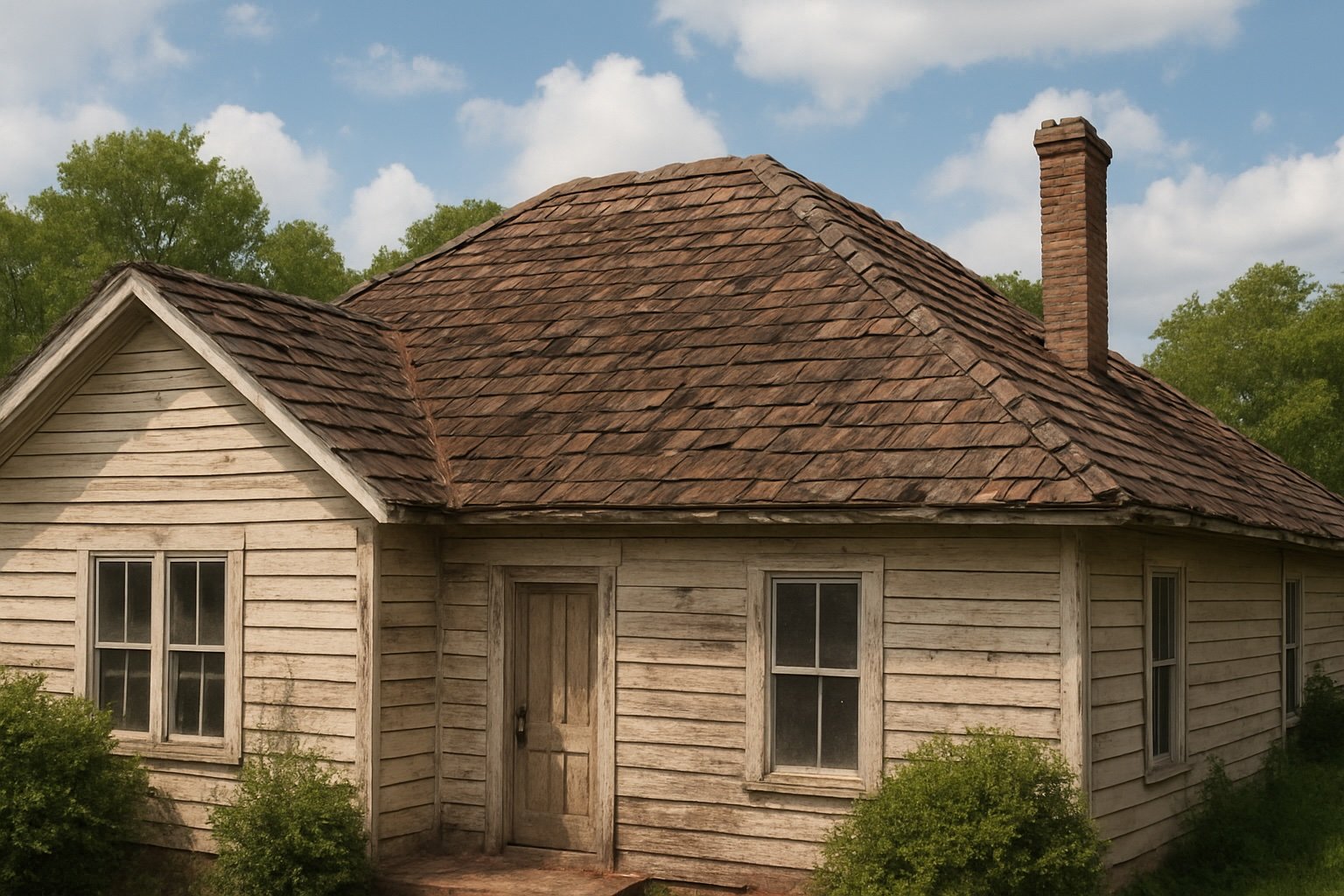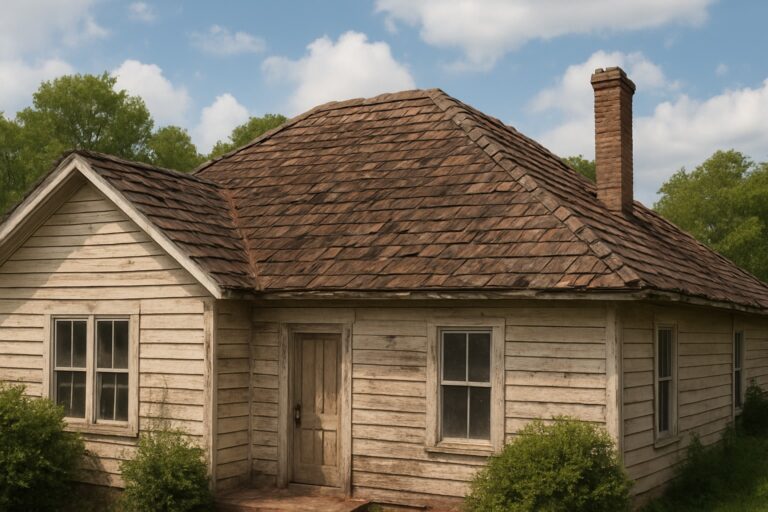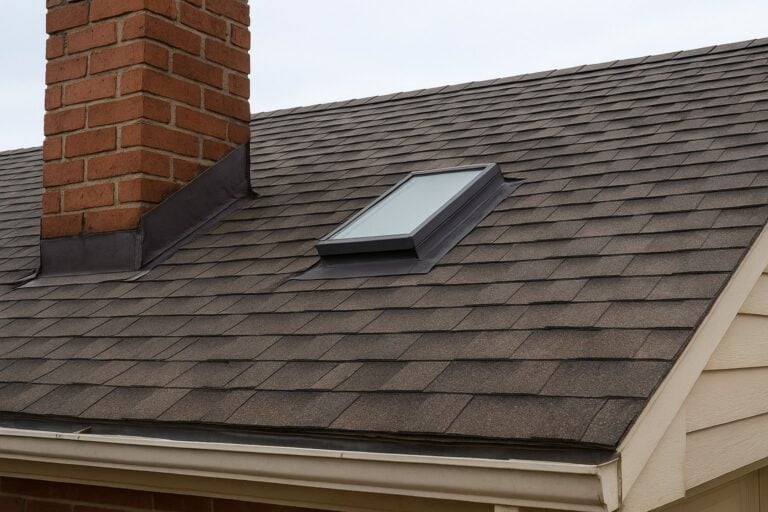In our work at Steadfast Roofing, we guide homebuyers through critical decisions—especially when the roof over their heads is showing age. An old roof can transform a dream home into a risk-laden investment if details are overlooked. We present a comprehensive, detailed guide to help you navigate the pitfalls, understand long-term costs, and make informed decisions before you commit.
1. Assessing Roof Age and Material Longevity
We begin by determining the roof’s age and material composition—key indicators of its remaining service life.
- Common lifespan based on materials:
- Asphalt shingles: Typically last 20–25 years in moderate climates; often shorter in areas with intense sun, hail, or wind.
- Metal roofing: Durable for 40–70 years, depending on coating and maintenance.
- Tile or slate: Can endure for 50–100 year,s but may conceal underlying underlayment decay.
- Flat membrane systems: The lifespan varies significantly—from 10 to 30 years—depending on installation and UV protection.
- Asphalt shingles: Typically last 20–25 years in moderate climates; often shorter in areas with intense sun, hail, or wind.
- How to confirm age:
- Request installation documentation or permits.
- Examine layers via attic inspections: multiple layers suggest repeat resurfacing.
- Look for dated shingles with manufacturers’ marks.
- Request installation documentation or permits.
2. Comprehensive Roof Inspection Checklist
We insist on a roofing inspection conducted by a certified professional that covers all vulnerable zones.
- Structural integrity:
- Check for sagging sheathing, bowed rafters, or uneven decking—signs of structural fatigue.
- Check for sagging sheathing, bowed rafters, or uneven decking—signs of structural fatigue.
- Shingles and tiles:
- Examine curling, granule loss, lifting, and missing pieces.
- For tile/slate, assess source tiles and look for cracks or substitutions.
- Examine curling, granule loss, lifting, and missing pieces.
- Flashing, valleys, and perimeters:
- Inspect seals around chimneys, vents, and skylights.
- Identify rust, gaps, or lifted edges that invite water intrusion.
- Inspect seals around chimneys, vents, and skylights.
- Underlayment and attic space:
- Look for mold, rot, or daylight through the roofing, which signals decking failure.
- Check insulation for stains or moisture accumulation.
- Look for mold, rot, or daylight through the roofing, which signals decking failure.
- Gutters, downspouts, and drainage:
- Ensure no blockages or water is pooling at the eaves, as these can accelerate deterioration.
- Ensure no blockages or water is pooling at the eaves, as these can accelerate deterioration.
- Wind and weather damage:
- Identify wind-lifted edges, dented areas, or hail impacts.
- Identify wind-lifted edges, dented areas, or hail impacts.
3. Estimating Repairs vs. Replacement Cost
After a detailed inspection, we categorize observed issues and align them with budgeting and negotiations.
- Minor repairs:
- Replace a few shingles or patch localized leaks.
- Typically under $500–$1,500 for moderate-sized roofs.
- Replace a few shingles or patch localized leaks.
- Partial roof overlay:
- Re-roof over existing material (allowed in some jurisdictions).
- Saves on tear-off, labor, and disposal while adding thickness and weight.
- Re-roof over existing material (allowed in some jurisdictions).
- Full replacement:
- Includes tear-off, decking repair, new flashing, underlayment, and shingles.
- Costs vary by material and complexity—average $7,000 to $25,000 or more.
- Includes tear-off, decking repair, new flashing, underlayment, and shingles.
- Cost-benefit considerations:
- A new roof yields better energy efficiency, structural safety, and resale appeal.
- Delaying replacement can escalate surface issues into structural damage.
- A new roof yields better energy efficiency, structural safety, and resale appeal.
4. Negotiation Strategies for Buyers
We deploy roof-informed negotiation tactics to safeguard investment:
- Contingency clause: Make the final purchase contingent on the roof condition and inspection results.
- Seller credit: Request a cash credit at closing to compensate for necessary roofing work.
- Pre-closing replacement: If the seller retains, ensure you approve contractors and materials.
- Shared cost agreements: Split repair/replacement costs if shared estimates justify mutual benefit.
5. Appraisal, Insurance, and Financing Impacts
An aging roof affects the larger financial layers of a home purchase.
- Appraisals:
- Roof age and condition may lower the assessed home value—appraisers factor in required future costs.
- Roof age and condition may lower the assessed home value—appraisers factor in required future costs.
- Insurance challenges:
- Insurers may deny coverage or significantly raise premiums for roofs over 15–20 years.
- Replacement before closing might be required to secure insurance.
- Insurers may deny coverage or significantly raise premiums for roofs over 15–20 years.
- Loan approval barriers:
- Mortgage lenders often mandate home insurance; lack of it stalls financing.
- Structural deficiencies reflected in inspection can trigger loan contingency clauses or denial.
- Mortgage lenders often mandate home insurance; lack of it stalls financing.
6. Long-Term Value & Resale Implications
We help you look beyond the immediate purchase to long-term home value.
- Value enhancement:
- A new roof can deliver higher resale appeal and justify a price premium.
- It signals to buyers that the home is well-maintained, stabilizing future market reception.
- A new roof can deliver higher resale appeal and justify a price premium.
- Budgeting for maintenance:
- If purchasing with an old roof, allocate funds upfront for replacement or significant repairs.
- Consider amortizing roof replacement costs into your 5-10 year home maintenance budget.
- If purchasing with an old roof, allocate funds upfront for replacement or significant repairs.
- Documenting work and warranties:
- Keep records of repairs, replacements, and warranties to support future buyers and insurers.
- Keep records of repairs, replacements, and warranties to support future buyers and insurers.
7. When an Old Roof Should Be a Deal-Breaker
Some roof conditions create unacceptable risk. We advise walking away if you encounter:
- Widespread rot, warping, or structural failure in decking or rafters.
- Hidden water damage in foundational or load-bearing components.
- Non-compliant upgrades or improper materials violating local codes.
- Persistent leaks despite patched repairs—indicating systemic failure.
- Insurability or financing issues that cannot be resolved with replacement cost.
CONCLUSION
Purchasing a home with an old roof demands evidence-based decision-making, strategic negotiation, and a long-term vision. We empower buyers to proceed confidently, balancing upfront investment against future savings and security. When the decision looms large, trust expert guidance to inform, protect, and optimize your home purchase journey.
Read one of our latest blogs: “The Most Vulnerable Areas of Florida Roofing Systems Every Homeowner Should Know”.




